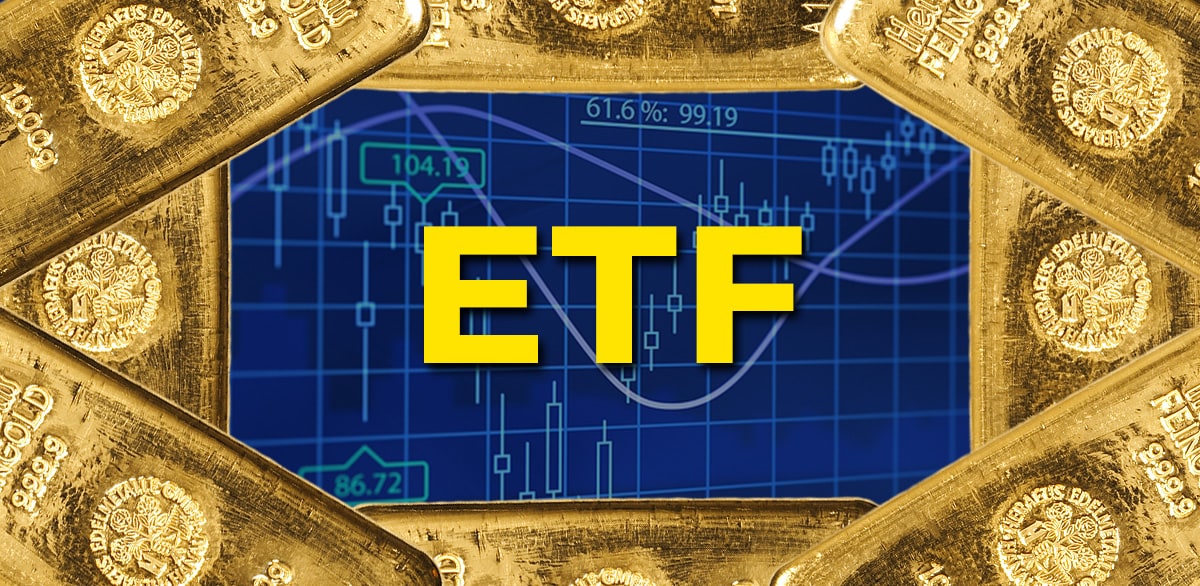
Gold exchange-traded funds (ETFs) are a popular option for investors looking to gain short-term exposure to the gold market. GLD stock is among the most commonly chosen of these ETFs due to its reputation and performance. However, does that mean it’s the ideal choice for investors eager to diversify their retirement accounts? Can GLD stock offer the advantages of physical gold?
Understanding GLD Stock
GLD stock is designed to offer access to the gold market without requiring investors to purchase, handle, and store physical assets. GLD shares are purchased from the SPDR Gold Shares ETF which is managed by State Street Global Advisors (SSGA) – one of the world’s largest asset managers. The share value of a GLD stock is intended to track the price of gold, seemingly offering the same benefits as holding tangible gold. This reasoning is slightly misleading because of the differences between the paper and physical gold markets.
How closely does GLD track the price of gold?
GLD tracks the spot price of gold with impressive accuracy. The ETF’s annual tracking error, which measures how often the value of the asset diverges from the gold spot price, is just 0.93%. With this level of accuracy, you might be wondering what difference it makes to hold physical gold vs paper gold. That’s where an understanding of the discrepancy between the spot price and physical price comes into play.
The spot price of gold is primarily determined by the buying and selling of futures contracts which are agreements to trade a commodity asset at a predetermined point in the future. Most contracts are never translated into physical metals, so the trading of paper assets far outpaces that of physical metals. Plus, massive institutional investors prefer buying and selling paper gold. These factors often cause the spot price to decouple from the physical price of gold.
Is GLD backed by gold?
GLD stock is partially backed by gold which has important implications for holders of the ETF. SPDR® Gold Shares hold a certain amount of gold bullion and cash, meaning its shares are linked to both physical gold and paper assets. When you buy GLD stock, you’re investing in only a fraction of those physical assets. The rest of your investment is cash.
It’s also important to note that the physical amount of gold backing each share gradually diminishes over time as the trust dips into its stockpiles to cover operational costs. Also, you cannot redeem your GLD shares for physical gold assets, limiting you to the ownership of paper gold exclusively.
The Shortcomings of a Gold ETF
GLD, along with other gold ETFs, is a convenient, low-cost way to gain exposure to the gold market, but investors looking to secure the broad spectrum of advantages offered by the precious metals market should consider physical assets. There are several downsides to relying on paper gold alone.
1. You don’t own any gold.
The most obvious pitfall of investing solely in a gold ETF is that you’re not gaining any direct exposure to tangible gold products. This provides a false sense of confidence and security among investors who anticipate the same protections as holding physical assets. Fortunately, you can easily buy physical gold or even set up a precious metals IRA to invest in physical gold directly while maintaining the tax advantages of standard retirement accounts.
2. Gold ETFs are subject to market volatility.
Gold ETFs are wrapped up in the financial system with all other traditional assets such as stocks and bonds which introduces serious volatility to your investments. Institutional investors wield a lot of influence on the price action in these markets, bringing the average investor along for the ride. In contrast, physical gold prices tend to follow the laws of supply and demand which can mean greater peace of mind for investors.
3. You assume significant counterparty risk.
When you purchase a share of any gold ETF, you’re entrusting your wealth to a management company, its asset managers, and all other parties involved in the process. This opens you up to increased counterparty risk, which is the possibility that a member of a contract will fail to uphold their end of the bargain. If negligent or even criminal activity were to compromise your investment, there’s little recourse for recouping your losses.
4. You have no access to physical gold.
Many gold ETFs are structured like GLD which means investors don’t actually own any gold. Even paper gold stocks that are backed by some gold don’t typically allow investors to redeem their holdings for physical products. This restriction leaves gold ETF holders with nothing but a paper certificate. Even if you have the desire to eventually own physical gold, buying a share of a gold ETF isn’t going to get you closer to that goal.
5. Gold ETFs are linked to the banking system.
We’ve discussed how gold ETFs expose investors to counterparty risk, but that’s not even the most compromising factor. Since these paper assets are held within the banking system, they’re subject to the weaknesses and vulnerabilities of this industry. The recent collapse of major banks in the US has generated widespread distrust and wariness among investors who see the banking system as a liability.
6. Your investments aren’t prioritized.
When you invest in a gold ETF, your hard-earned wealth isn’t going to be prioritized. No matter how much you invest, the funds are integrated with those from fellow investors and intermixed with other assets held by the custodian. To give you an idea, around 1 million people hold shares of the GLD stock. When you join these ranks, your wealth isn’t getting the due diligence or protection you might expect.
Physical gold has been a staple investment for millennia due to its inflation-hedge properties, relative stability, and historical performance. If you’re interested in getting started with owning physical gold or you just want to learn more about investing in physical precious metals, request Scottsdale Bullion & Coin’s FREE gold and silver investment guide.


